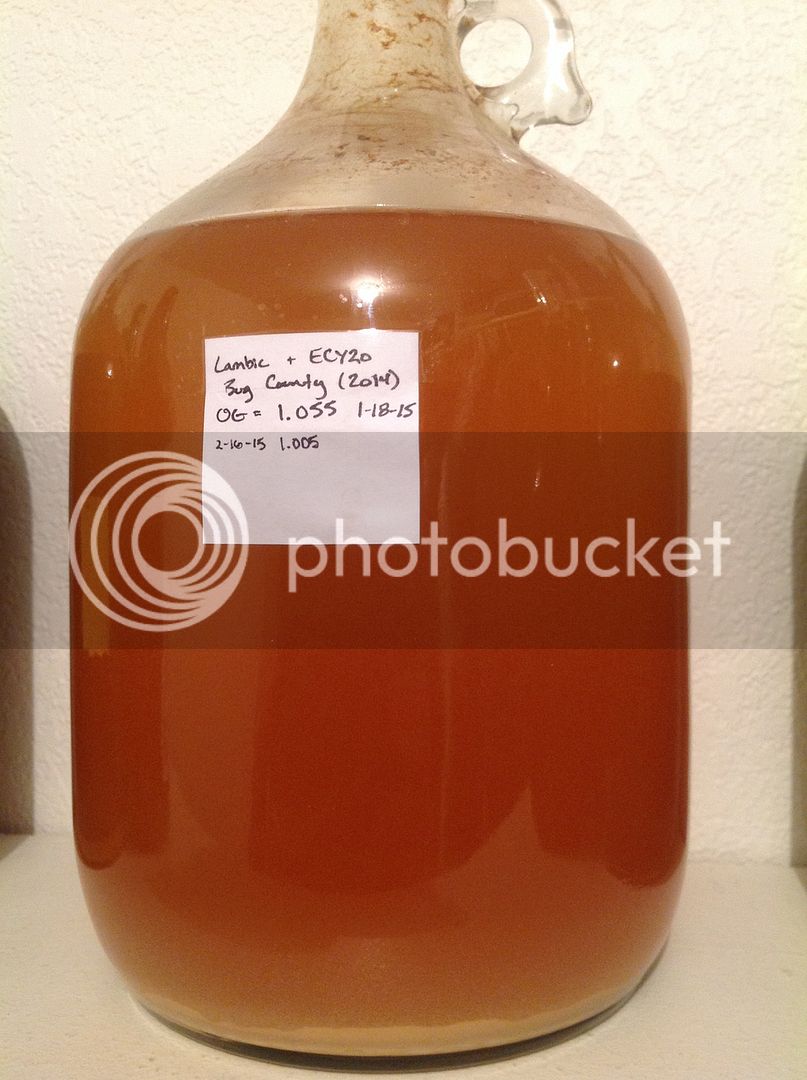Well, I just got around to using up the last of my vial of Bug County the other day. I had done a big split batch a few months ago, but had about 50 mL left that I wanted to use for a 3rd batch. And it took until now to find time to brew it. So, that means this vial has been sitting in my fridge for around 3 and a half months.
I brewed on Friday, April 10th, and the brew day went smoothly. I wanted to do something to get more starches into the wort, and I had read about people putting some extra grain in the boil. I used up the last of my bag of 2-row to get my grain bill where I wanted it, but I happened to have some old-fashioned oatmeal on hand. So, I threw in a half pound of oatmeal about 15 minutes before the end of the boil. AND after cooling, I dumped all of the oats into the fermenter. Then I pitched the 50 mL of Bug County.
It got off to a slow start. When I looked at it this morning (approx. 36 hours after pitching), it had some small bunches of bubbles on the surface that made me think some of the bacteria or brett had gotten to work. I was half worried that the saccharomyces had died off and half excited that this beer would likely be super sour. But alas, there is nothing to worry about. The sacch kicked in and has now created a full and active krausen and the airlock is bubbling steadily.
I'll be letting this one sit for a good long while. Planning on at least a year. And I might also add some fruit to it at some point, if the flavor seems like it would match blend well with fruit flavors.
Anyway, just wanted to share my experience with a combination of using this blend after it's been sitting around for a while and also pitching just a small amount of it. I'll try to remember to report back as it ferments and I take samples (won't be frequent, but I'll try to remember).



